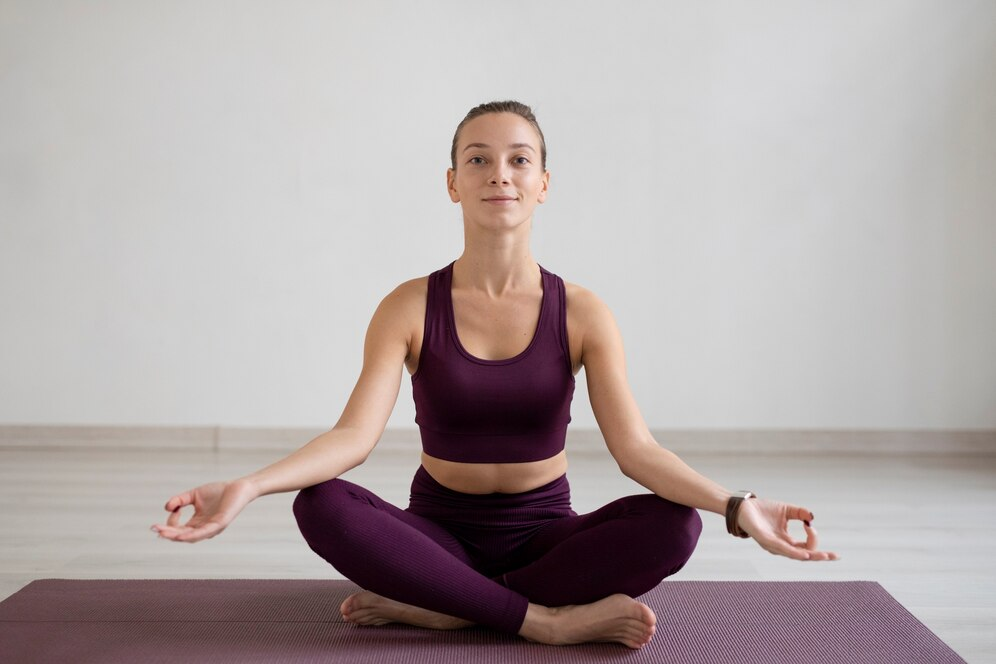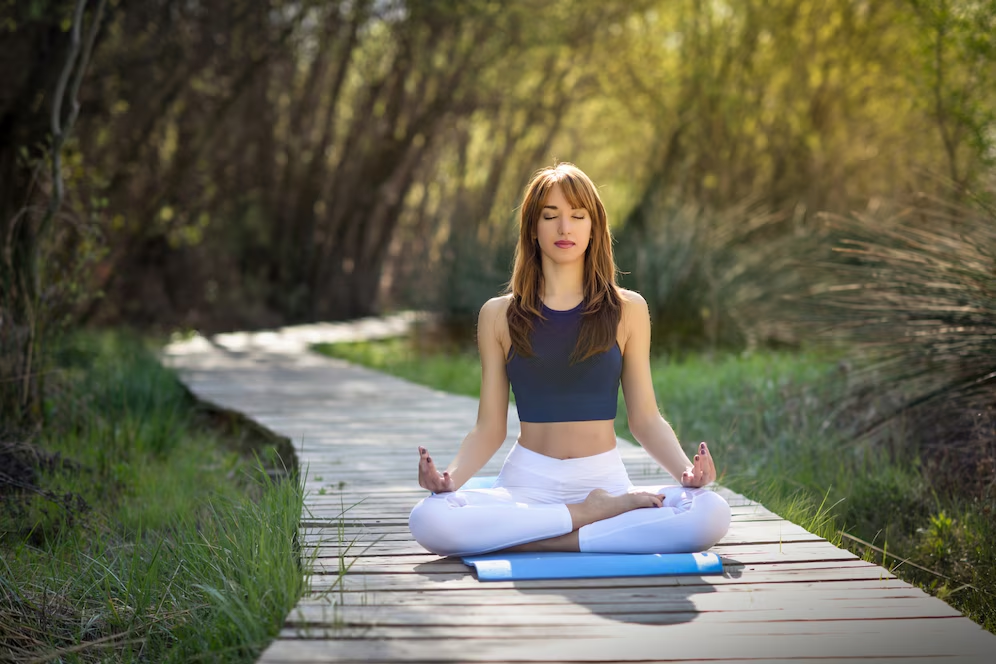
Yoga, an ancient practice that involves the combination of physical postures, breathing exercises, and meditation, has gained global popularity as a holistic approach to well-being. To beginners, yoga might appear difficult as it encompasses various techniques and forms. Nonetheless, if guided well and with realistic expectations, each beginner can smoothly adapt/transition to the practice and receive its benefits.
How does someone who is a complete beginner go about starting their yoga practice?
The best way to start yoga as a beginner is by taking introductory classes, either online or at a studio. Focus on basic poses, breathing techniques, and alignment. Gradually increase your practice frequency, and listen to your body to avoid injury.
Although starting yoga might seem daunting for a person who is a total beginner, going one step at a time through the journey makes it quite manageable and enjoyable. Take some introductory classes that will build up your basic postures and teach you proper breathing techniques. They provide a well-structured environment where instructors are able to guide you through every movement, helping with correct alignment.
Regular practice, even just a few times a week, slowly conditions your body for flexibility over time. Just do what your body feels like doing; don’t push yourself too hard, and it won’t hurt as easily. As you become more confident, you can start trying different styles and intensities. You can increase the duration and frequency over time.
What are some basic yoga poses for beginners?
Basic yoga poses for beginners include Mountain Pose, Downward Dog, Child’s Pose, and Warrior I. These foundational poses help improve flexibility, strength, and balance. Practicing them regularly builds confidence and prepares beginners for more advanced yoga sequences.
Start with basic yoga poses that will let the beginner establish strength in their practice. The mountain Pose ensures good posture and balance; it’s also a grounding pose. Downward Dog stretches the hamstrings and strengthens the arms and shoulders. Child’s Pose creates a resting position that gently stretches the back and hips.
Warrior I builds strength in the legs and opens the chest and shoulders. These are approaches that can be accessible and modified in many ways to suit different levels of flexibility and strength. With regular practice, these postures increase body awareness and prepare one for more complicated sequences of yoga as one graduates through them.

How often should a beginner practice yoga?
A beginner should practice yoga 2-3 times a week to build consistency and progress. This frequency allows the body to adjust, enhances flexibility, and strengthens muscles. Listening to your body and gradually increasing practice sessions is crucial for safe development.
For beginners, a recommended frequency would be 2-3 times per week for the sake of building up consistency and gradual progress. Working on this schedule enables the body to get familiar with new movements and flexibility and strength to grow over time, avoiding excessive stress and fatigue.
You might start feeling ready to kick things up a notch in frequency and duration once you get more comfortable with the poses and routines. It’s all about being attuned to your body and giving your body time off between sessions to recover. This balanced approach will make yoga growth safe and continuous over a longer period of time.
What equipment will I need to start yoga?
To start yoga, beginners need a yoga mat, comfortable clothing, and optional props like blocks or straps. A mat provides stability, while props assist in achieving poses safely. Investing in quality equipment enhances the yoga experience and supports proper alignment.
The requirements for equipment to start yoga are minimal, so it is accessible to most beginners. The yoga mat is a must since it serves as cushioning and helps with stability, preventing slipping during poses. Comfortable clothing that allows freedom of movement should be worn to facilitate the performance of a full range of motion.
Additional props such as yoga blocks and straps can help create a perfect pose by providing support to hold the pose and making adjustments where appropriate, more so for those whose flexibility is limited. You may choose to invest in good equipment if you intend to focus on your practice by using support whenever necessary.

What are some of the mental health benefits associated with starting a yoga practice?
Starting yoga improves mental health by reducing stress and anxiety, enhancing focus, and promoting relaxation. Regular practice encourages mindfulness and emotional balance, helping individuals cope better with life’s challenges. These benefits contribute to overall mental well-being.
Internationally, yoga is known to aid mental health with a self-balanced attitude toward the improvement of emotional well-being. In practice, physical movement is combined with breathing and mindful concentration. As such, this substantially decreases stress and anxiety. Yoga works on relaxation by stimulating the parasympathetic nervous system, which calms the mind and increases concentration.
In such a state of mindfulness, one will be kept in the present and thus deal better with everyday stressors, as it provides emotional balance, so yoga enhances resilience—improving one’s strength for surviving life. It is the mental health gains that provide the basis for enhanced positive outlook and mental well-being.
Embarking on Your Yoga Journey
Getting started with yoga can be as simple or as difficult as you like; it’s just about starting at your own pace. Approach every pose with no pre-set opinions, and remember: all yogis have their beginnings. Watch online tutorials, sign up for beginners’ classes, and find community. Your personal growth will be achieved through your journey in yoga – start it with positive thinking and understanding.
